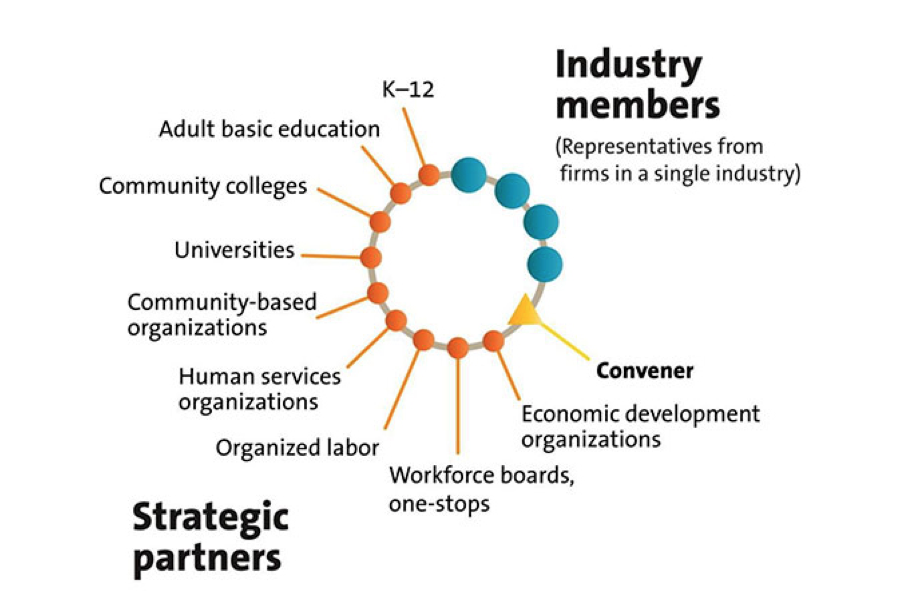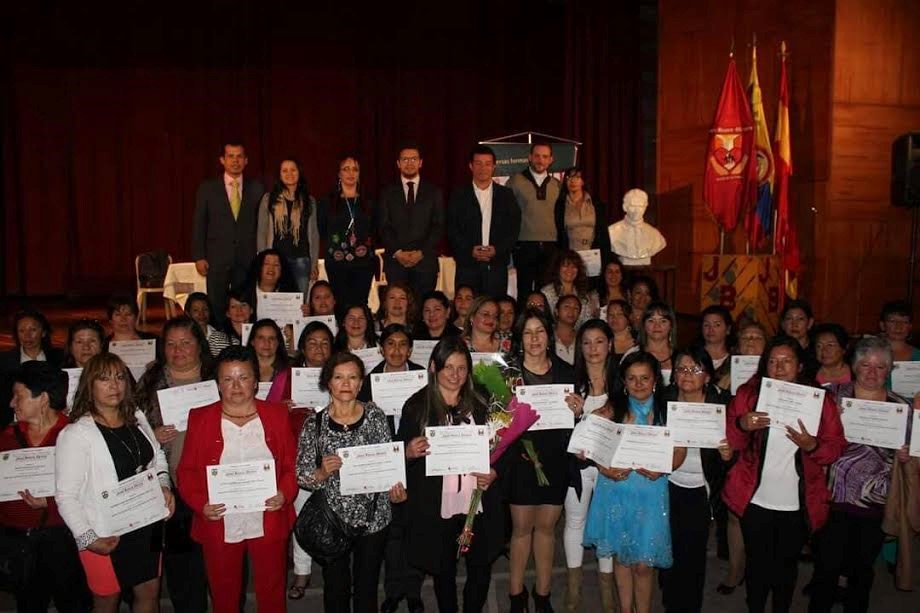No one cares how much you know, until they know how much you care.
- Theodore Roosevelt
The Reason for the Economic Value of a College Degree
National reports on employment show that achieving college education is one of the most impactful steps that an individual can take toward steady work and increased income. During the darkest moment of the last great recession, employment for bachelor’s degree graduates over age 25 remained at 95 percent.1 Today, employment for bachelor’s degree graduates over age 25 has climbed to 97.9 percent.2 The median lifetime earnings net of educational expenses for college graduates stand at a significant premium -- a more than $400,000 gain -- compared to those of learners who only complete high school.3
Many people assume that the economic benefits of advanced education flow from gains in knowledge and intellectual skills. After all, postsecondary educational programs tend to conceive of their mission in terms of academic progress. Nevertheless, research suggests that college academic programs struggle to deliver practical knowledge and skills attainment required for employment. Most college graduates do not end up working in their specific fields of postsecondary study.4 Moreover, recent evidence suggests that gains in knowledge and specific intellectual skills among college graduates are very limited. The controversial publication of the University of Chicago Press, Academically Adrift: Limited Learning on College Campuses, cites voluminous data from student surveys and analysis of student transcripts to show that many college learners experience minimal classwork expectations. Tracking 2,300 students of traditional college age enrolled at a range of four-year colleges and universities, the authors’ research suggested that 45 percent of students “did not demonstrate any significant improvement in learning” during the first two years of college, while 36 percent of students “did not demonstrate any significant improvement in learning” over four years of college. Academic progress for the remainder of students was anemic at best, with students improving on average only 0.18 standard deviations over the first two years of college and 0.47 over four years.
This research supports the intuitive assessment by many employers that college graduates require significant on-the-job training to become productive because their studies are not immediately relevant to their job functions.5 Likewise, job seekers tend to understand that employers value experience more than academic knowledge, especially to the extent that they expect new hires to make immediate contributions. Research also suggests that most college graduates enter the workforce suffering from significant deficits in writing, analytical skills, and practical knowledge.6
Against this backdrop, how do we explain the labor market’s significant preference for college graduates and the premium earnings that they enjoy? Is this simply a case of culture or social stereotypes overcoming rational decision-making? Or is there something else at work? Does the market understand something about college graduates that the research on academic gains does not adequately grasp?
Social and Emotional Learning Powering Success
In the words of Dale Carnegie, “Even in such technical lines as engineering, about 15 percent of one’s financial success is due to one’s technical knowledge and about 85 percent is due to skill in human engineering, to personality and the ability to lead people.” Employers understand that education and experience do not merely impact academic knowledge and intellectual skills. College education also provides a foundation for social and emotional development and psychological maturation.
Since Carnegie’s 1936 manifesto, How to Win Friends and Influence People and, more recently, undergirding Steven Covey’s 7 Habits of Highly Effective People, social and emotional learning (SEL) has been recognized as critical for success in the labor market and in life. The language used to point to SEL varies depending on the discipline of the author or cultural context of the conversation. In business, the phrase “emotional intelligence” dominates, while those in academic circles tend to use the phrase “non-cognitive skills.” Workforce development professionals use the phrases “soft skills,” “employability skills,” or what has become known as “the 21st century skill set.” In the realm of youth development and educational psychology, “grit, resilience, and future orientation” are phrases pointing to the same arena of human capabilities. These diverse areas of study and expertise share focus on emotional and psychosocial mastery. Such mastery involves a broad spectrum of characteristics and abilities: persistence, motivation, and self-discipline; interpersonal skills such as communication, negotiation, the ability to work in teams and team-building itself; and adaptability to changes in the external environment while maintaining self-efficacy.7
Widespread efforts to incorporate SEL lessons into curriculum at the secondary and, increasingly, postsecondary levels reflect consensus about the importance of SEL for college and career readiness. These efforts manifest as Career and College Readiness standards and standards for interpersonal learning as well as attention placed on experiential learning models in traditional educational settings, including such strategies as problem-based learning, service learning, or education through work experience.8 Educators are coming to see that success in postsecondary environments and in the work place depends as much on noncognitive skills as content knowledge in a particular discipline. Echoing economic studies that demonstrate the positive impact of SEL skills on productivity, wages, and health, education research is forging a connection between SEL skill development and college and life success.9 A high school teacher at a U.S. Senate Committee hearing regarding employability language in the reauthorization of the Perkins Act made the stark observation that, “we are hired for our social emotional skills, we are promoted for our social emotional skills, and we are fired for our lack of social emotional skills.” Findings from a national 2012 employer survey conducted by The Chronicle of Higher Education and American Public Media’s Marketplace reflect a similar assessment. This survey showed that half of employers found recent graduates lacking the noncognitive skills necessary to fulfill job responsibilities. Such findings shed light on why the market continues to value a bachelor’s degree in spite of its insufficient preparation of future workforce leaders. Without clearly articulating the strategy, employers may be using college graduation as a marker of at least some acquisition of the SEL skills necessary for workplace success, such as setting and achieving goals, perseverance, and willingness to learn as compared to high school graduates.10 In the words of Paul E. Harrington, head of Drexel University’s Center for Labor Market and Policy, “It’s a relative bet.”
Postsecondary Education as an Incubator for Social and Emotional Development
There are compelling reasons to believe that college education has the potential to foment powerful gains in social and emotional learning. Daniel Goleman, a widely recognized thought leader on the subject of emotional intelligence, defines this capacity in terms of self awareness, self regulation, motivation, empathy, and social skills. The nationally renowned Collaborative for Academic, Social and Emotional Learning (CASEL), adopts a similar model, emphasizing five core competencies: self awareness, self management, responsible decision making, relationship skills, and social awareness. Successfully navigating the social matrix presented by most postsecondary programs entails a thorough workout of such skills and competencies.
Gaining admission to college requires significant self awareness and self management, as students must prepare for and plan to take tests that are not mandatory for high school graduation (for example, nationally recognized standardized tests, advanced placement tests, and other subject matter tests). Students must also show self awareness and initiative in researching and selecting institutions that match their interests, career goals, and qualifications. Students must then write a personal essay and consider how their community service and extracurricular activities reflect personal qualities such as integrity, compassion, and resilience that will impact multifaceted college admissions decisions.
Attending college often requires students to leave their families and home communities and thus gain exposure to a diversity of interpersonal situations that may be psychosocially unfamiliar or uncomfortable. Through exposure to other cultures and diverse social environments, students may strengthen self awareness, self management, motivation, empathy, and emotional stability. College generally requires students to interact with dozens of diverse faculty members and administrators and to navigate diverse social frameworks requiring students to assess individual approaches to classroom behavior, academic expectations, and collaborative learning. The work of building relationships with socially and economically diverse peers, administrators, and faculty members provides powerful opportunities to develop empathy, relationship skills, social skills, social awareness, and responsible decision making.
For many students, college also entails rich nonacademic engagements as they become involved in social and cultural activities, sports, clubs, and political organizations and movements. All of these experiences provide fertile ground in which to develop social and emotional skills and competencies. These nonacademic, social settings may also provide rich learning environments for mastering group dynamics, leadership and followership, effective teaming, and the ability to understand the impact of larger social and political dynamics on organizations and individuals.
Graduating from college requires students to develop meaningful self management and motivational skills such as drive and persistence as they balance the competing demands of academic, social, and personal commitments. In this sense, the experience of attending and graduating from college is perhaps understood as an important introduction to similar competing dynamics among the modern workplace, family, and community.
Lack of Strategic Goals and Measures Pertaining to Social and Emotional Development During Secondary and Postsecondary Education
Within postsecondary education, focus on institutional goal setting, measurement, and research regarding social and emotional development has been scant. The Every Student Succeeds Act (ESSA) (successor to the federal No Child Left Behind Act), set forth a compelling vision in which all students in America are taught to high academic standards that will prepare them to succeed in college and careers. Even though ESSA opened the door to goal setting and metrics for social and emotional development, not a single state plan prepared in response to ESSA calls for the inclusion of goals or metrics pertaining to social and emotional learning, though some states have independently created associated standards.11 At the level of college accreditation, while most colleges offer pervasive opportunities for social and emotional learning and leadership development, accrediting bodies have yet to focus discretely on goals and measures for social and emotional learning as a critical element of postsecondary education planning and institutional assessment.
Consider recent work of the Lumina Foundation. Lumina has established itself as a thought leader in the field of postsecondary access and equity. Lumina’s leadership is visible not only through its philanthropic work, but also through its efforts to convene the policy, institutional, and research players in the field around the development and implementation of innovations. Lumina recently completed the launch of an ambitious project, the Degree Qualifications Profile (DQP), offering a framework for assessing student learning at every postsecondary degree level in all areas of study. Yet, this comprehensive profile includes no social and emotional learning outcomes.12 Lumina is plugged into the labor market demand for SEL type skills with a vision of a postsecondary system that “meets the nation’s need for talent through a broad range of credentials.”13 President and CEO Jamie Merisotis in his introductory letter to the DQP acknowledges employer demand for soft skills. The DQP is a massive, collaborative and iterative undertaking. To its credit, Lumina envisions the DQP as a dynamic tool, reflective of the evolution of higher education in content and delivery and welcomes feedback to improve and make the DQP increasingly useful. Perhaps the feedback process is an appropriate forum in which to explore the inclusion of SEL proficiencies gained through the college experience in the next version.
It may simply be a question of orientation. The dialog about postsecondary educational achievement in the academic arena is concerned with academic proficiencies stemming from study in the major disciplines. Expanding this dialog to include SEL gained through nonacademic experiences during college is not part of the traditional canon of the academy. Yet an articulation of the full value of a college education to the complete spectrum of stakeholders -- employers, students, and families -- may surface critical gains in SEL competencies deeply valued among developers of human capital: postsecondary institutions, the workforce development system, and employers.
Emergent Models of Emotional Intelligence and Social and Emotional Learning
In western society, diverse models are emerging in the study of emotional intelligence and the practice of developing social and emotional skills and competencies. The “Ability Model” conceives of emotional intelligence as the ability to perceive, understand, and regulate emotions in order to facilitate personal growth.14 It views emotions as sources of information that help individuals navigate the social landscape. Measurement tools employing the ability model tend to focus on the ability to perceive and understand extant social norms, since individual responses are evaluated based on larger relevant social samples.
Arising from the work of Daniel Goleman and organizations such as CASEL, the “Mixed Model” moves beyond the social awareness dimension at the center of the Ability Model, also embracing self regulation, motivation, empathy, and other social skills.15 These expanded factors are measured through assessment of abilities such as knowing what one is feeling, understanding the impact moods have on others, controlling or redirecting one’s emotions, anticipating consequences before acting on impulse, utilizing emotional factors to achieve goals, sensing the emotions of others, managing relationships, inspiring others, and inducing desired responses from them.
Developed through the efforts of Dr. Konstantinos Vasilis Petrides, The “Trait Model” works through self-assessment of emotion-related perceptions rather than through the measurement of socially-oriented cognitive abilities assessed through performance on psychological tests.16 The Trait model is interested in exploring whether such self-assessments correlate to prosocial or antisocial behaviors, physical or psychological health, educational outcomes or other behaviors or personality factors of interest. The Trait Model criticizes the “Ability Model” and the “Mixed Model” for a lack of objectivity, along with problems in operationalizing performance measures. The Trait Model is concerned about the potential for measures of performance that rely on expert or consensus assessments to reflect conformity to social norms or to be confounded with other factors such as stereotypical judgements.
While there is an emerging consensus about the general importance and relevance of social and emotional development to success in work and life, it is clear from review of the literature that research on social and emotional development currently lacks a consensus vision about the specific attributes of psychosocial health and also lacks consensus about how exactly psychological variables related to social and emotional development should be framed, understood, and measured. Psychosocial constructs (and the observable and latent variables that underlie them) such as social skills, attitudes, prosocial and antisocial conduct, emotional distress, empathy, and academic progress must be specifically defined to avoid taking on disparate meanings influenced by diverse cultures and contexts. Without such careful definition, social research into social and emotional development is unlikely to be replicable, generalizable, or widely relevant within rapidly evolving organizations and wider social systems.
It is possible to identify many elements of social and emotional development that are not clearly delineated within existing models but that are nevertheless observable as highly relevant to success in the modern family, workplace, and community. For example, building upon self perception and empathy is the ability to understand the congruence (or lack thereof) between one’s view of oneself and the view held by others and to manage the implications of this connection or disconnection. Similarly, the ability to develop strong relationships with others is not exactly the same as the ability to employ those relationships in working toward shared objectives. Along the same lines, understanding how others feel and perceive reality is not the same as being able to influence these factors.
In another dimension of organizational life, social and emotional development seems to deeply impact an individual’s ability to understand and respond to the needs of a group through a service role. This requires an understanding of social context and systems that arises out of more elemental social skills but is substantially more challenging. Similarly, sustaining motivation within a team or community over a long period grows out of more fundamental skills related to emotional self-regulation.
Surfacing Social and Emotional Learning and Seizing a Critical Opportunity
Practicing leaders and managers are keenly aware of the impact of social and emotional learning and development on organizational success. They recognize that intellect without social and emotional intelligence often cannot be put to work, and that often the hardest tasks confronting an organization have more to do with social and emotional effectiveness than with traditional academic skills. Yet there is little formal measurement of social and emotional learning in academic institutions -- the primary training ground where new organizational members are prepared. Leaders and managers learn to assess ability in this arena through intuition and also by looking at non-academic and social leadership activities such as engagement in arts, faith based, or community service initiatives.
The blind spot around social and emotional learning offers postsecondary programs a significant opportunity for innovation. In the quest to strengthen their immediate relevance to practical work and employment, colleges and universities should begin to take a comprehensive approach. Some critical questions to consider:
- Within Curriculum. What social and emotional skills should our curriculum work to develop? The focus should be on skills related to listening, building relationships, personal and social awareness, emotional insight and stability, grit, resilience, persistence, awareness and mastery of group dynamics, creativity, teamwork, leadership, ethical decision-making, and empathy.
- Extracurricular. How will our institution intentionally harness social, faith-based, cultural, and political activities to enhance social and emotional development? How much focus should we place on organizing institutionally sponsored activities so that they are supported with appropriate opportunities for training specifically targeted at social and emotional development, including models that encourage reflection, dialogue, and learning about the psychosocial elements of social experiences?
- Assessment. What methods will our institution employ to assess social and emotional learning, both within our curriculum and across the extracurricular activities that our community supports? The focus here should be on developing pre- and post intervention assessments to determine impacts on defined social and emotional skills and abilities. In this regard, it will be important to tease out formative, summative, and participatory-action assessments. From a wider perspective, once an institution has developed a strategic orientation to social and emotional learning, it should work to develop studies and experiments with strong design involving randomized, controlled trials. While predictive research in social sciences remains very challenging due to serious problems with replication within diverse and rapidly evolving human systems, the scientific method can nevertheless help to keep our work grounded. Knowing the limits of our knowledge of human systems is as valuable as discovering widely replicable patterns. Moreover, the conversation about experimental design can help clarify the strategic goals of interventions as we work to measure what matters.
There is little doubt that college education can and does serve to help students achieve not only enhanced knowledge and intellectual skills, but also stronger social and emotional skills vital to learner success in work and life. While social and emotional development in college today is not yet adequately understood and planned, it may be among the most important and valuable dimensions of postsecondary education. Challenge and opportunity await.
Footnotes
4 ibertystreeteconomics.newyorkfed.org
7 Heckman, Stixrud, Urzua “The Effects of Cognitive and Noncognitive Abilities on Labor Market Outcomes and Social Behavior,” National Bureau of Economic Research, Working Paper 2006. Postelwaite and Silverman, “Non-Cognitive Skills, Social Success and Labor Market Outcomes,” 2006; “Improving College and Career Readiness by Incorporating Social and Emotional Learning,” College and Career Readiness and Success Center, American Institutes for Research.
8 Ibid.
9 Heckman Savitz-Romer, M., Rowan-Kenyon, H., Zhang, X., & Fancsali, C., (2014),“Social-Emotional and Affective Skills Landscape Analysis: An Executive Summary,” www.impaqint.com. Socas, John, “Infusing Social and Emotional Learning (SEL) into the Community College Curriculum,” Community College Journal of Research and Practice Vol. 41, Iss. 12,2017
11 See, e.g., www.edweek.org static.pdesas.org
13 www.luminafoundation.org/about
14 Mayer, J.D.; Salovey, P.; Caruso, D.L.; Sitarenios, G. (2001). "Emotional intelligence as a standard intelligence". Emotion. 1: 232–242.
15 Goleman, D. (1998). Working with emotional intelligence. New York: Bantam Books
16 Petrides, K.V.; Pita, R.; Kokkinaki, F. (2007). "The location of trait emotional intelligence in personality factor space". British Journal of Psychology. 98: 273–289.










